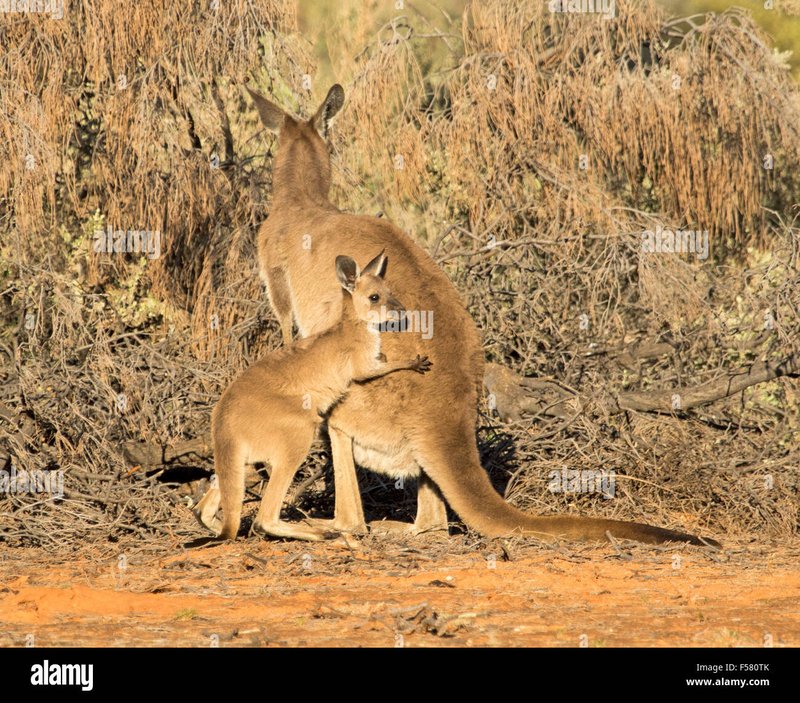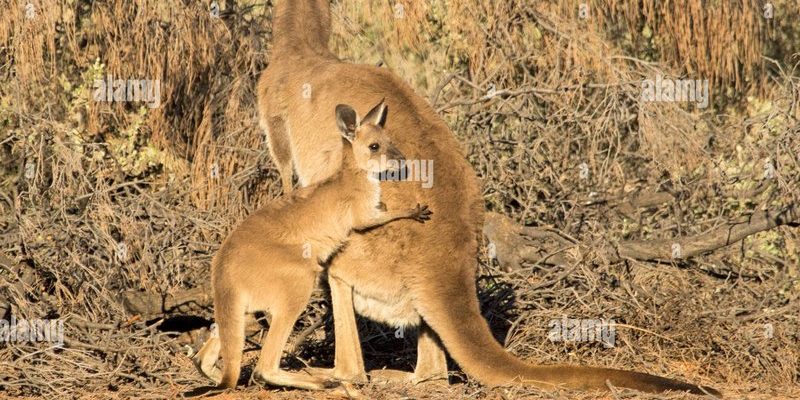
These fascinating creatures have a unique way of nurturing their young that’s both instinctual and innovative. They’re not just cute; they have incredible parenting skills. So, let’s hop into the details about how Western grey kangaroos raise their joeys in the wild, exploring the ins and outs of their nurturing process and what makes them truly special.
The Life Cycle of a Western Grey Kangaroo
When you think about kangaroo babies, the first image that comes to mind is probably the cute little joeys peeking out from their mothers’ pouches. But let’s take a step back and look at how this cycle begins. Western grey kangaroos typically mate during the cooler months of the year, around autumn and winter. After a pregnancy lasting about 30 to 36 days, the tiny, underdeveloped joey is born—no bigger than a jellybean!
Once born, the joey instinctively climbs into its mother’s pouch, where it will spend the next several months developing. This pouch is like a cozy little nursery, providing warmth and safety as the joey continues to grow. Isn’t it fascinating how nature works? While the mother goes about her daily activities, the joey gets all the nutrients it needs while nestled in that pouch.
Over time, the joey will begin to peek out of the pouch, exploring the world while still relying on its mother for support. Around six months old, they start to experiment with solid food while still breastfeeding. It’s like a toddler taking their first steps—exciting yet daunting! The mother will encourage their independence, teaching them about their surroundings and how to find food.
Independence from the Pouch
As the joey grows, the time will come for it to venture further from the pouch. This stage is crucial. The mother kangaroo starts to give her joey more freedom, allowing it to explore its environment, which is filled with potential dangers. This gradual separation helps the joey learn essential survival skills, like finding food and identifying threats.
At around eight months, you might see a joey fully venturing out, sometimes even hopping alongside its mother. Think about how a parent teaches their child to ride a bike: they’re always there, guiding them but letting them gain confidence on their own. Similarly, the Western grey kangaroo helps the joey grow while still keeping a watchful eye.
During this time, the mother also continues to nurse her joey, but that milk becomes less frequent as the joey learns to graze on grass and leaves. It’s like the mother is saying, “You’re ready for the next step—time to learn how to feed yourself!” This balance of support and independence is key to raising a well-adjusted kangaroo.
Motherly Care and Protection
The bond between a mother kangaroo and her joey is strong, built on instincts that ensure the joey’s survival. When faced with danger—such as predators like dingoes or eagles—the mother kangaroo takes immediate action to protect her young. She might make a protective stance, ready to defend the joey, or lead it to safety.
One notable behavior is when she uses her pouch to shield the joey. If she senses a threat, she’s quick to pull the joey back into her pouch, ensuring it stays safe and secure. It’s a bit like a protective parent grabbing their child’s hand in a crowded place—instinct drives them to keep their young ones close and safe.
Additionally, mothers will teach their joeys about their environment, showing them which plants are safe to eat and where water sources are located. This education is vital for the joey’s survival as it grows older and ventures out on its own.
Social Structure and Group Dynamics
Western grey kangaroos are social creatures, often found in groups called mobs. These mobs play an essential role in the upbringing of the joeys. Being part of a group not only provides safety in numbers but also encourages social interaction. You might be wondering how this impacts the joeys.
Being around other kangaroos helps the young ones learn from their peers. They engage in play, honing their skills in a safe environment. It’s much like kids playing together at a park—learning social rules, developing confidence, and becoming more adept in their surroundings. They observe older kangaroos, picking up important lessons about survival, foraging, and even social behaviors.
The presence of other adult kangaroos can also offer additional protection. If a mother kangaroo feels threatened, she knows her mob will help keep an eye out and can rally together against potential threats. This cooperative behavior strengthens bonds among the group’s members and fosters a supportive atmosphere for raising young kangaroos.
The Transition to Independence
As time goes on, the joeys reach a point where they’re almost fully independent. Around 10 to 12 months, they may start to leave their mothers for more extended periods. While they occasionally return to the pouch for comfort and security, they are increasingly able to navigate the world on their own.
This transition can be bittersweet. For the mother, it’s a sign that her hard work has paid off. Her joey is now capable of surviving without her constant care. For the young kangaroo, it’s an exciting time—like graduating from school and stepping into the world, ready to explore, forage, and find their own place within the mob.
By the time they are around 15 months old, most joeys will have fully weaned and are ready to live independently. Though they may still stay close to their mother’s mob for a while longer, they will soon begin to forge their paths, seeking mates and eventually starting families of their own.
Raising young in the wild is no small feat, but Western grey kangaroos do it with grace and instinct. From the moment a tiny joey finds its way into its mother’s pouch to the day it hops away to start its adventure, each step of the journey is filled with learning, growth, and love.
Understanding how these magnificent creatures nurture their young helps us appreciate the delicate balance of life in the wild. Every moment, from protecting their newborns from predators to teaching them essential survival skills, showcases nature’s brilliance. The cycle continues, reminding us that parenting, whether in the animal kingdom or among humans, is a universal experience filled with challenges, triumphs, and unconditional love. So next time you see a kangaroo, remember the incredible story behind how they raise their young—it’s a beautiful reminder of the wonders of nature.

